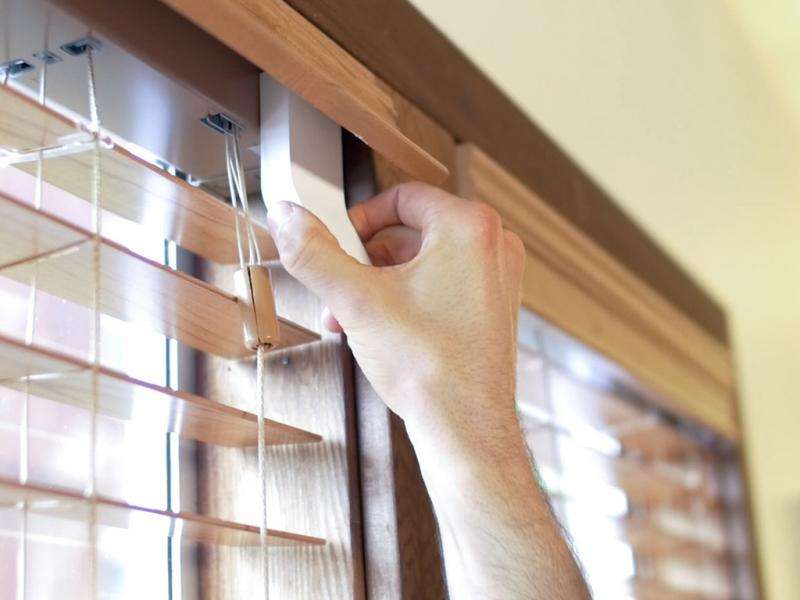April 2, 2016 weblog
No, don't get up: These window blinds control light on their own

Smart objects in the home have been well publicized, from prototype to product stage. We hardly register surprise at the thought of doors that open and close and lights that turn on and off all on their own.
The enterprising San Francisco-based FlipFlic team now want you to entertain the thought of how convenient and helpful it would be if your window blinds were smart too, in using their device.
They are introducing FlipFlic on Kickstarter, described as a smart blinds controller, a device you use so that your blinds will move to let in or block light by themselves. It's a small adjusting device that enables blinds' automation. You clip the device on to the blind—it attaches magnetically—and it works.
(More specifically, they said you snap your FlipFlic from either side of the headrail on the rotating shaft. You need to make sure you have two inches to the wall from either side of the rail to fit the device.) FlipFlic works with 1'' mini blinds and 2'' (50 mm) blinds up to 60'' (152 cm) wide.
At present, the app for this is compatible with iOS devices and is available in the AppStore; you adjust the blinds to your specific preferences—according to temperatures, light, and time settings.
The device is to be provided in two versions, for horizontal and vertical blinds. They said, "You will choose between a horizontal or vertical blinds version after the campaign has ended."
One could use it to adjust numerous blinds too. How does it work? FlipFlic is triggered by built-in light and temperature sensors. It rotates the existing tilting mechanism to move the blinds automatically.
Aside from a pitch of it being convenient and time-saving, there may be practical reasons for its use beyond convenience. Blinds moving by themselves might be advantageous if you are on a trip and (1) don't want to reveal there is nobody home so thieves would not get any ideas and (2) want household pets to get the comfort of not being confined to a dark space. Smart blinds might also be helpful for elderly and infirm residents with difficulties in getting up to adjust the blinds.
The device runs primarily on solar power but, according to the listed specs, the rechargeable LiPo battery is more than 500 mAh. They said, "Without the solar panel, we estimate that recharging may be required approximately once every 30 days of average use." FlipFlic can be removed for charging with the use of a standard MicroUSB cable.
The creative minds behind this device are Ksenia Vinogradova, CEO and her four-person team.
They have a $50,000 goal for their campaign.
"Our next phase will be focused on testing for design validation, PCB, and design updates after tests, completing the required certifications, packaging design, and spinning up our production lines." They will, for example, use the funds, among other necessary uses, to order components for their first production run and cover certification costs.
A pledge of $85 gets one FlipFlic Full Pack with estimated delivery in January 2017. The Kickstarter campaign page lists the details of what you get and how much you have to pay in its assorted ranges of options and prices.
© 2016 Tech Xplore















